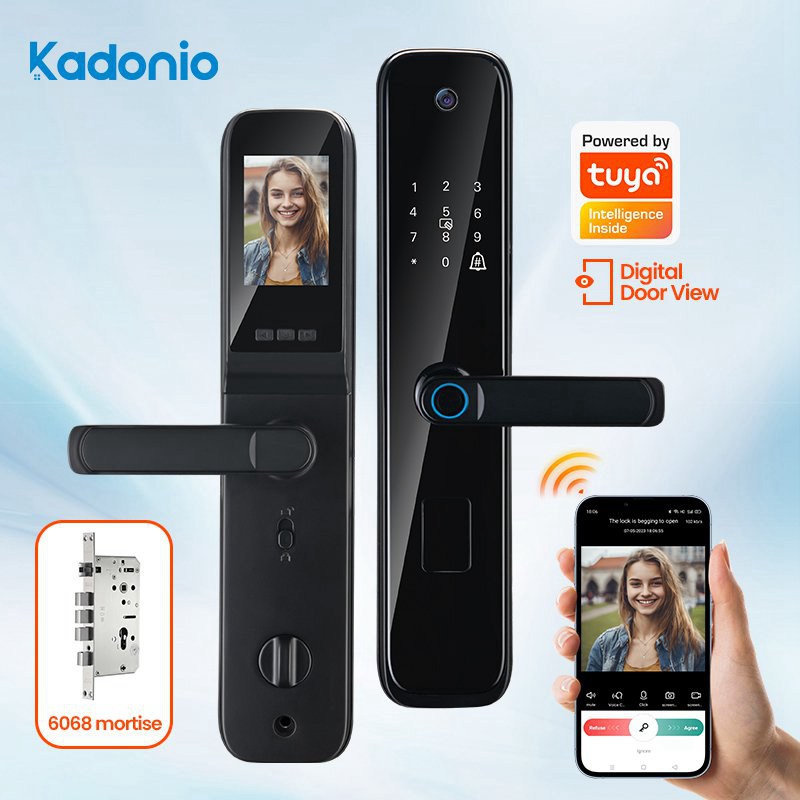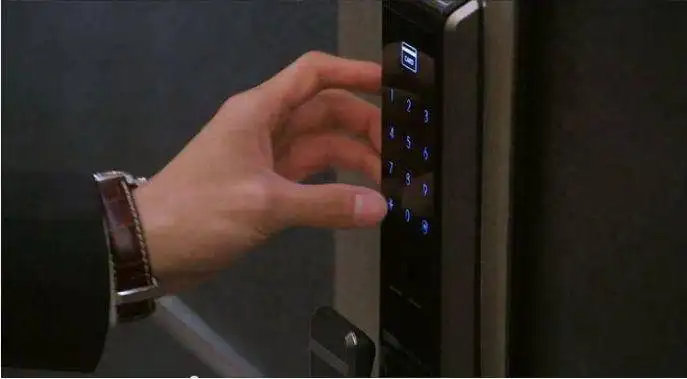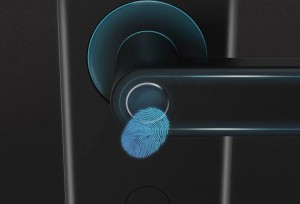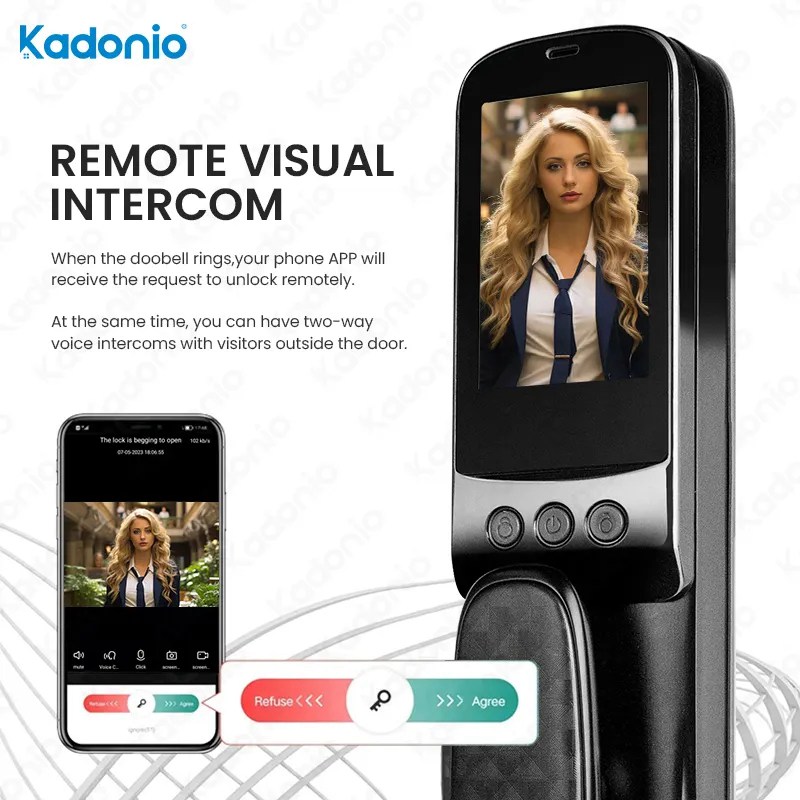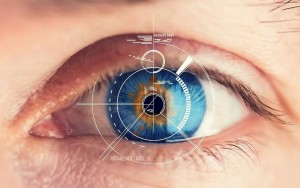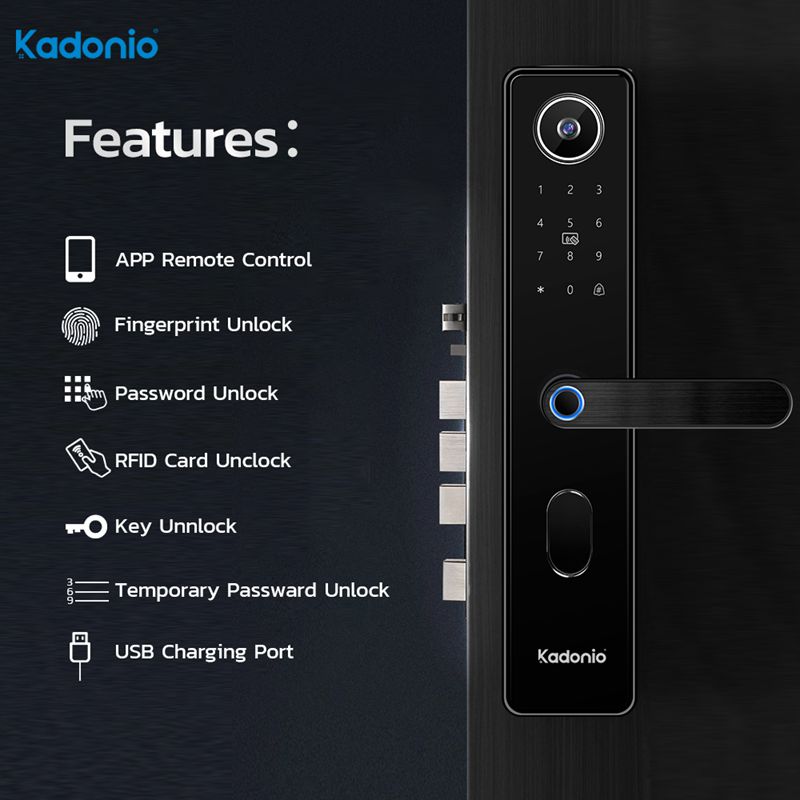As technology advances and economies grow, the variety and functionality of smart locks continue to expand. But just how many types of smart locks are there on the market? Today, we’ll delve into the categorization of smart locks from various perspectives to provide a comprehensive overview of the options available.
1. Door Opening Mechanism
When it comes to the basic mechanism of opening doors, smart locks can be broadly categorized into two types: lever handle and sliding.
① Lever Handle Smart Locks
Lever handle smart locks operate similarly to traditional mechanical locks, requiring the user to press the handle to unlock. These locks are typically semi-automatic, requiring users to manually turn the handle after authentication.
② Sliding Smart Locks
As the name suggests, sliding smart locks utilize sliding actions for unlocking. They are generally fully automatic, automatically unlocking the door after authentication and locking it upon closure. Users only need to engage in sliding actions to unlock and lock the door.
2. Biometric Recognition Methods
Based on biometric recognition methods, smart locks can be classified into five types: password, fingerprint, facial recognition, vein recognition, and iris recognition. Among these, password, fingerprint, and facial recognition are the most prevalent.
① Password Locks
Password locks were among the earliest forms of smart locks, allowing users to unlock by entering a password. They are widely used in scenarios like rental properties due to their low production cost and easy management.
② Fingerprint Locks
Fingerprint locks have gained popularity due to their stable prices and cost-effectiveness. Most fingerprint locks in the market utilize semiconductor fingerprint recognition technology, offering enhanced security.
③ Facial Recognition Smart Locks
Facial recognition technology comes in two main types: 2D and 3D. Major brands predominantly adopt 3D facial recognition technology for its superior security and accuracy.
④ Vein Recognition Smart Locks
Vein recognition utilizes the unique patterns of blood vessels in fingers for identification. It boasts high security and is increasingly applied in smart lock products.
⑤ Iris Recognition Technology
Iris recognition identifies individuals based on the unique patterns of the iris. While highly secure, its application in residential smart locks is limited due to technical challenges and high costs.
3. Lock Body Types
Smart locks can be divided into those with mechanical lock bodies and those with electronic lock bodies, also known as rear-mounted motor smart locks and built-in motor smart locks.
① Rear-Mounted Motor Smart Locks
Rear-mounted motor smart locks typically feature mechanical lock bodies operated by square bars. They can be automatically or manually unlocked after authentication. While widely used due to their mature technology and low cost, they tend to consume more power and produce more noise.
② Built-In Motor Smart Locks
Built-in motor smart locks employ electronic lock bodies, automatically unlocking upon authentication and locking upon closure. Although they require higher technical expertise, they offer lower power consumption and a more aesthetic appearance.
4. Additional Features
In recent years, smart locks with additional features such as peepholes and internet connectivity have gained popularity among consumers.
① Peephole Locks
Peephole locks allow users to monitor their doorways through installed peepholes, shifting from passive to active defense. Some models even integrate indoor visual screens, combining doorbells, locks, and interior displays for added convenience.
② Internet-Connected Locks
Internet-connected locks, favored by younger demographics, enable remote control via smartphones and provide enhanced security by transmitting various lock information. They offer both convenience and safety, making them highly desirable options.
With such a diverse array of smart locks available, consumers can select the type that best suits their needs, whether prioritizing security, convenience, or additional features. From traditional password entry to cutting-edge biometric recognition, the evolution of smart locks continues to redefine home security.
Post time: Feb-07-2024

